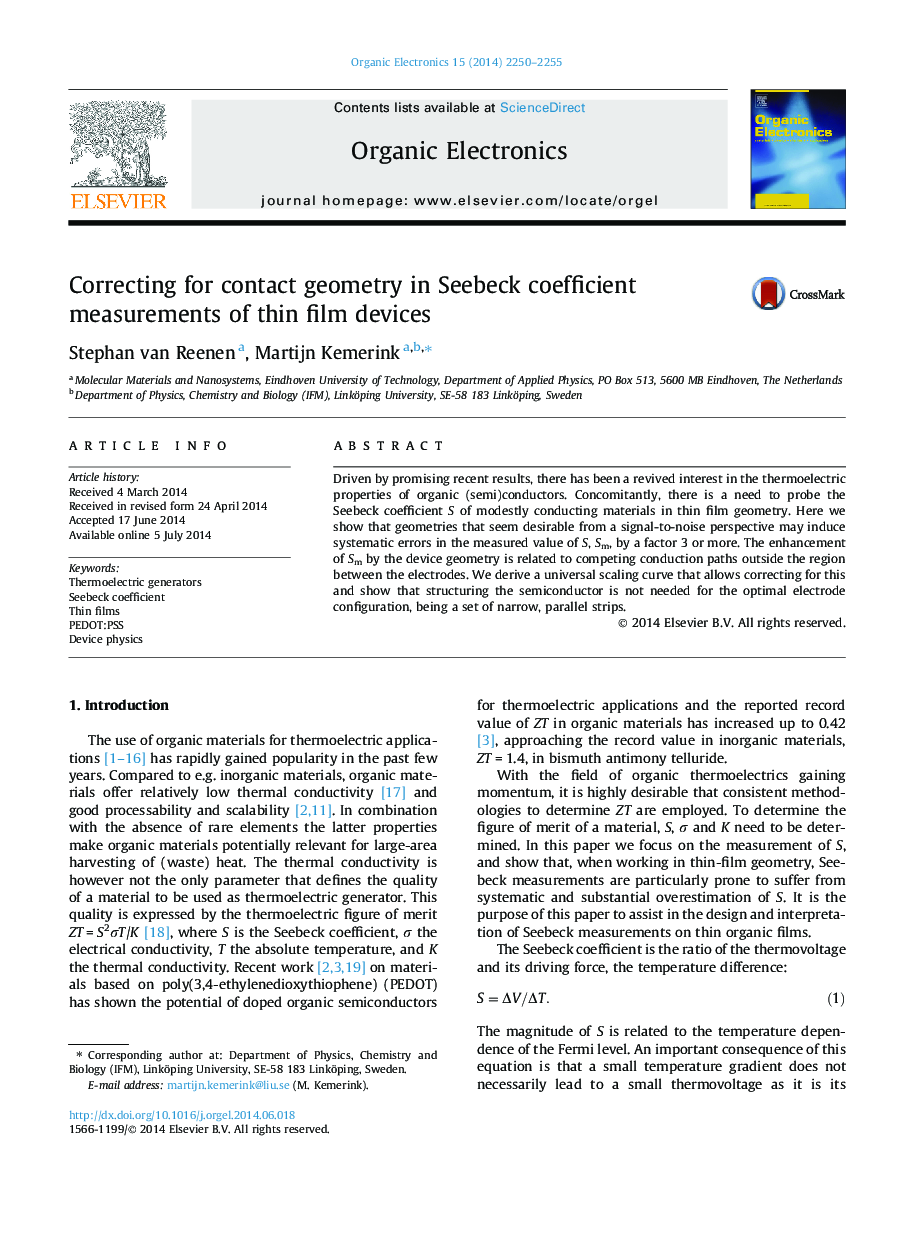| Article ID | Journal | Published Year | Pages | File Type |
|---|---|---|---|---|
| 1263758 | Organic Electronics | 2014 | 6 Pages |
•The effect of device geometry on the measured Seebeck coefficient (Sm) is studied.•Wrong choice in device geometry can lead to errors in Sm as high as a factor 3.•Universal scaling of errors in Sm is shown, allowing for a posteriori correction.•Analytical calculations confirm the limiting behavior of errors in Sm.•Experiments on different device geometries show the same effect.
Driven by promising recent results, there has been a revived interest in the thermoelectric properties of organic (semi)conductors. Concomitantly, there is a need to probe the Seebeck coefficient S of modestly conducting materials in thin film geometry. Here we show that geometries that seem desirable from a signal-to-noise perspective may induce systematic errors in the measured value of S, Sm, by a factor 3 or more. The enhancement of Sm by the device geometry is related to competing conduction paths outside the region between the electrodes. We derive a universal scaling curve that allows correcting for this and show that structuring the semiconductor is not needed for the optimal electrode configuration, being a set of narrow, parallel strips.
Graphical abstractFigure optionsDownload full-size imageDownload as PowerPoint slide
